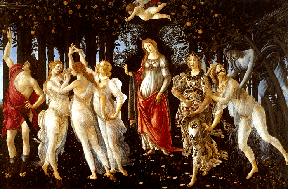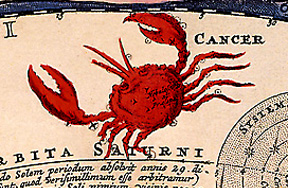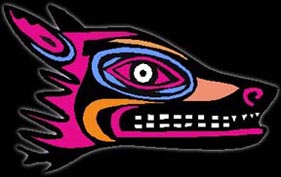Door to enclosure of Sun temple at Machu Picchu, Peru.
Click on image for full size
Image courtesy of Corel Corporation.
Inti
Inti was considered the Sun god and the ancestor of the Incas. Inca people were living in South America in the ancient Peru. In the remains of the city of Machu Picchu, it is possible to see a shadow clock which describes the course of the Sun personified by Inti.
Inti and his wife Pachamama, the Earth goddess, were regarded as benevolent deities. According to an ancient Inca myth, Inti taught his son Manco Capac and his daughter Mama Ocollo the arts of civilization and sent them to the Earth to instruct mankind about what they had learned.
Inti ordered his children to build the Inca capital where the tupayauri fell to the ground. The tupayauri was a divine golden wedge. Manco probed the ground with the wedge, and at one point threw it into the ground. The tupayauri sank into the ground, and so the search for a site was over. Incas believed this happened in the city of Cuzco, which has been founded by the Ayar.
Inti is celebrated even today in Peru during the Festival of Inti Raimi in Cuzco where an Inca drama related to the Sun god is re-enacted.
You might also be interested in:

Ahsonnutli was the sky father and chief deity of the Navajo Indians. He created heaven, Earth, and the sky. Each of the four cardinal directions was supported by a giant. Each direction was also associated
...more
Amphitrite was one of the fifty Nereids, the attendants of the sea-god Poseidon. Poseidon (Neptune) had fallen in love with Amphitrite after seeing her dancing on the island of Naxos. Amphitrite rejected
...more
Aphrodite was the Greek goddess of love and beauty. She was known to the Romans as Venus. There were actually two different Aphrodites, one was the daughter of Uranus, the other the daughter of Zeus and
...more
In Greek mythology, Apollo was the son of Jupiter(in Greek Zeus) and Leto (Letona). He was the god of the Sun, logic, and reason, and was also a fine musician and healer. Leto travelled all over Greece
...more
According to an ancient Greek legend, the figure of a gigantic crab was placed in the nighttime sky by the goddess Hera to form the constellation Cancer. Hera was the jealous wife of the sky god, Zeus.
...more
In the Northern Hemisphere sky is the constellation Cepheus, king of Ethiopia, and that of his wife Cassiopeia. Cassiopeia claimed that she and her daughter Andromeda were more beautiful than the sea nymphs,
...more
According tho the Navajo mythology, the Milky Way was created by the misbehavior of the mischievous deity, Coyote. When the world was created, the Holy People gathered around Black God to place the stars
...more















